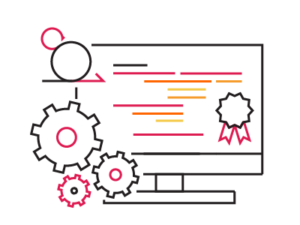4 Industries That Have Benefited From the Lean-Agile Methodology
In today’s fast-paced and highly competitive business environment, teams increasingly emphasize efficiency, productivity, and customer satisfaction. “Work smarter, not harder” is a popular catchphrase, as the old approach of working long hours with excessive planning is no longer practical in 2023.
With consumers expecting nothing less than prompt responses and instant gratification, businesses cannot afford to waste time and resources on elaborate strategies that may or may not become irrelevant once executed. Thus, companies increasingly turn to the Lean-Agile methodology as a solution.

- Establish a streamlined, efficient, and adaptable workflow
- Cut costs
- Quickly respond to evolving customer needs and market trends
- Deliver continuous and incremental improvements to products and services
- Improve customer engagement and communication
- Promote a culture of collaboration and problem-solving
- Provide customers with the highest quality products and services in the shortest possible time
This article explains the Lean-Agile methodology in-depth, including practical examples of how various industries can leverage it.
What is the Lean-Agile Methodology?
The Lean-Agile methodology combines two crucial business mindsets to prioritize speed, flexibility, collaboration, project management, and product development. It merges Lean principles, rooted in manufacturing—minimizing waste, and maximizing value—with Agile practices rooted in software—delivering value quickly, adapting to change, and welcoming customer feedback.
Lean-Agile principles holistically complement each other and improve operations and outcomes. They enable organizations to achieve better results while using less time and resources. They foster cross-functional collaboration and teamwork to leverage employees’ skills and expertise. The concepts encourage continuous learning, experimentation, waste elimination, streamlined processes, improved product quality, and higher customer satisfaction.
What Industries Can Leverage the Lean-Agile Methodology?
The Lean-Agile methodology is not limited to any industry or sector, but the following four industries have seen notable success leveraging the Lean-Agile process.
Software Development

Spotify exemplifies a software development company implementing Agile practices in the Lean-Agile methodology. The company employs small, cross-functional teams that work autonomously to develop and deliver new features to users swiftly. These teams oversee work based on their specific areas of expertise and use user feedback to respond promptly to changing requirements while continuously improving the product.
Manufacturing
The manufacturing industry was the first to implement Lean principles to make project management and product development more cost-effective by eliminating waste, optimizing processes, improving productivity, and maximizing value.
Toyota pioneered Lean manufacturing approaches to where its focus on waste reduction, increased efficiency, productivity, and continuous improvements positioned it as the world’s most valuable automotive brand.
Healthcare
The Lean-Agile methodology can help the healthcare industry improve patient outcomes, reduce costs, and better use communication and feedback.
Boston’s Brigham and Women’s Hospital is a great example of a healthcare provider that successfully applied the Lean-Agile methodology. Since adopting a Lean-Agile framework, the hospital redesigned annual wellness visits, with cross-functional teams collaborating based on skills and insights. Moreover, the hospital iterated and received feedback from clinicians and patients to streamline the care delivery process. They could rapidly change course when needed.
Finance

ING, a 300-year-old multinational bank, adopted Lean-Agile and became Germany’s first agile bank in 2015. ING pioneered a transformation model named “PACE” that aims to:
- Streamline project management and software development processes
- Support quicker launches of new products and services
- Connect design thinking, lean startup, and agile methods with the needs of the ING-adapted process
PACE also forces ING to validate its innovations with customers to ensure that resources are allocated to improve their lives.
The Key Takeaway
Adopting a Lean-Agile framework is not an overnight process. It requires a significant cultural shift. Business leaders must prioritize continuous improvement, collaboration, and transparency to succeed. To do this, organizations must gain a deep understanding of their workflows, processes, and goals.
However, while time-consuming, the result is often worth the effort. By prioritizing these values and building upon the methodology’s principles, organizations can drive innovation and agility and efficiently improve product outcomes, regardless of their industry.
To dive deeper into organizational change using Lean-Agile principles, read our white paper, Using Lean-Agile Principles to Execute Organizational Transformation.


